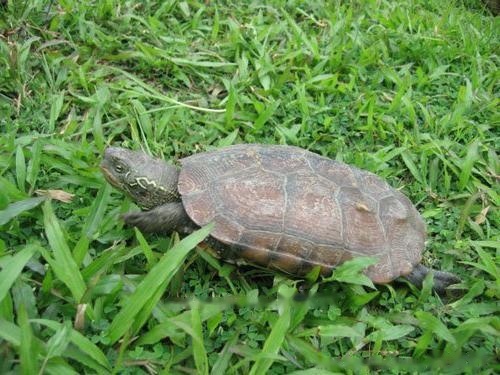The big-headed tortoise (Latin name: Chinemys megalocephala), also known as the big-headed tortoise, is a reptile of the genus Tortoise and Turtle. The female is larger (about 25CM) and the male is slightly smaller. The carapace is spindle-shaped, with distinct ridges and brownish black. The big-headed turtle is amphibious turtle species, so in the environmental layout, it is necessary to set up a reasonable drying platform for the big-headed turtle to provide him with rest, and pay attention to the temperature of the breeding during the maintenance process. Under certain temperature conditions, this is a kind of Hibernating turtle.

Big tortoise
Big tortoise Not afraid of cold, when the water temperature is about 10 ℃, it enters the hibernation stage; the water temperature is about 0 ℃, it can still hibernate normally; the suitable water temperature is about 22 ℃; when the water temperature exceeds 35 ℃, the turtle likes to burrow into the sand or rest in the shade. The food intake is small and tends to be omnivorous, and the food includes insects, snails, small fish, aquatic plants, etc. Big-headed tortoises are more active than tortoises, easy to domesticate and bold.
The tortoise is a water turtle. It can be raised in water at a temperature above 15 degrees, but the water depth is generally not too much more than the turtle's back. Feeding must be in the water to eat tortoises. Change the water about 30 minutes after feeding, because the turtle will pull after eating. It can be dry when the temperature is lower than 15 degrees, and it can be kept moist by spraying water. Forgetting to spray water is not a big problem, winter is the best season to raise. Eat more, pull more in summer, and change the water at least once a day.
Big-headed tortoises are amphibious animals, they use lungs to breathe, and there are horny nails on the body surface, which can reduce water evaporation. Tortoises prefer to live in groups, and we can often see groups of tortoises resting together. Sometimes because there are too many tortoises living in groups, their carapaces will become smoother.

Subscribe to Newsletter
Professional platform for pets, dogs and cats.
![[Dog Training 5] The training method of pet dog dining etiquette](/static/img/12192/12192_1.jpg)




